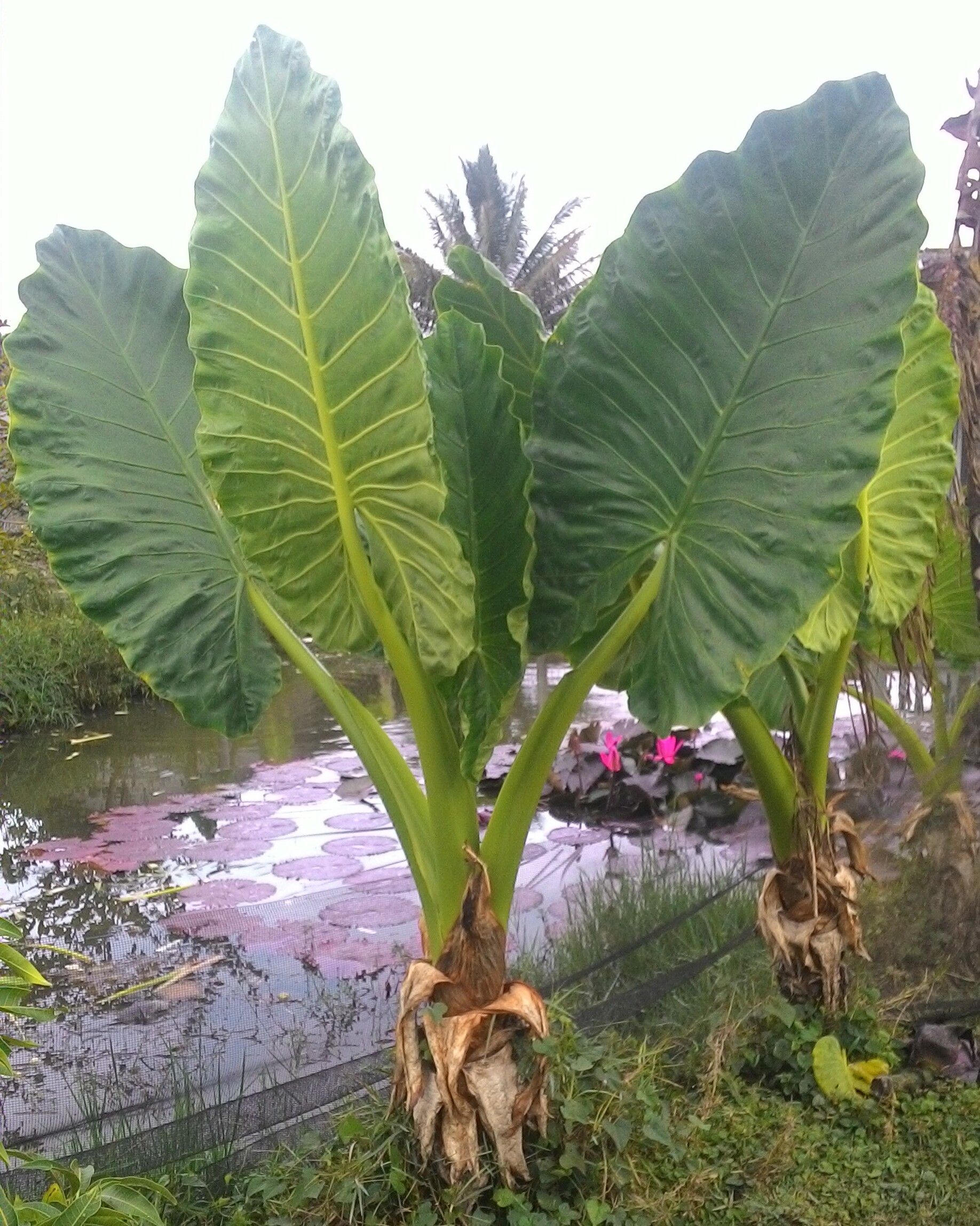
Talas or Talas bogor is a plant that produces tubers are quite important. Allegedly from Southeast Asia or southern Central Asia, taro is considered to have been cultivated humans since antiquity, even in the days before planting rice by humans. Now the taro has spread to various parts of the world, including India, China, West and North Africa, and West Indies. Taro is a staple food, in addition to breadfruit, on some islands in Oceania. In Indonesia, Talas is very popular in almost all regions. One area in Bogor, Garut and in some other areas that have been cultivated Talas or Talas Bogor.
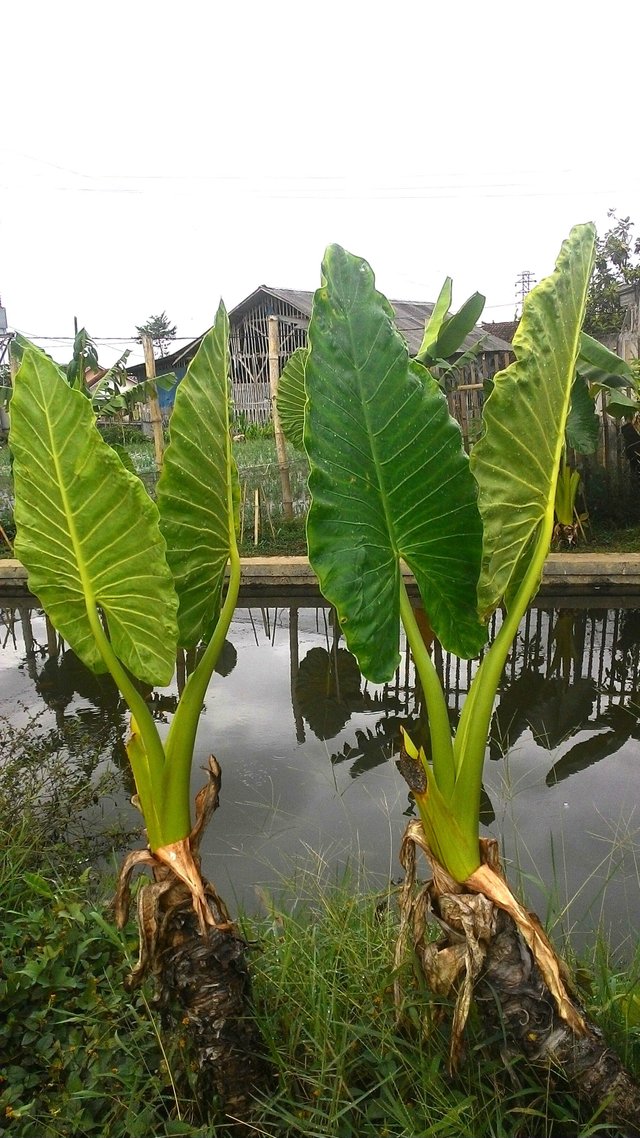
The names of many areas are similar to the words of taro and taro, for example talé, kĕladi, sukat, suhat, seuhat, suwat (Bat.); taro (Nias); taléh, kaladi, kuladi (Min.); talos, kĕladi (Lamp.); talĕs, kĕladi, kujang, luèh (Day.); taleus, bolang (Sd.); tales (Jw.); talĕs, kaladi (Md.); talĕs, kladi (Bl.); talé, koladi, kolai, kolei, korei, kore (various dialects in North Sulawesi); aladi, suli, kosi, paco (South Sulawesi); lole, ufi lole (Timor); inane, inano, inan, ina wuu, ronan, kětu, etu, hakar, wakal, guwal (various islands in Maluku); bètè, ota, dilago, komo (North Maluku); nomo, uma, warimu, hèkérè, sèkéré, ifen, yéfam (Papua). While taro in English is called taro, old cocoyam, dasheen, and eddoe. Saurce wikipedia
purplish stripes, 23-150 cm, the base is midrib-shaped; leaf strands 6.60 × 7.53 cm, round eggs, jorong, or oval, with tapered ends, sometimes purplish colored around the stalk, the lower side is waxy, rounded base tangkai.
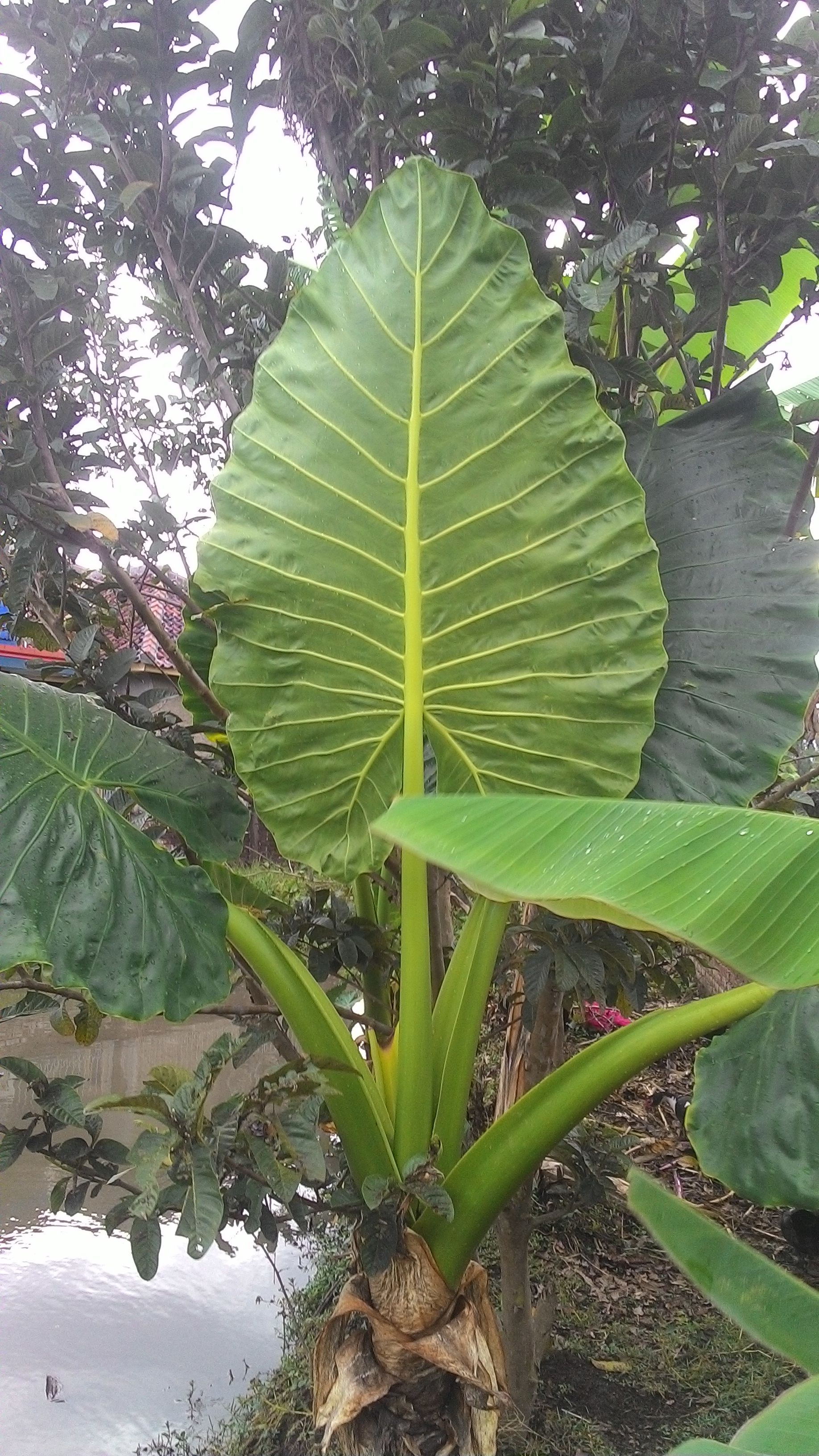
Inflorescence occurs inside the cob in the armpits, stemmed 15-60 cm. The 10-30 cm flowerpot consists of two parts, the longer top, the orange yellow and the fall. Butter-colored cauldron on the male portion. Buni fruit is green, lk. 0.5 cm. Spindle seeds, grooved longitudinally.
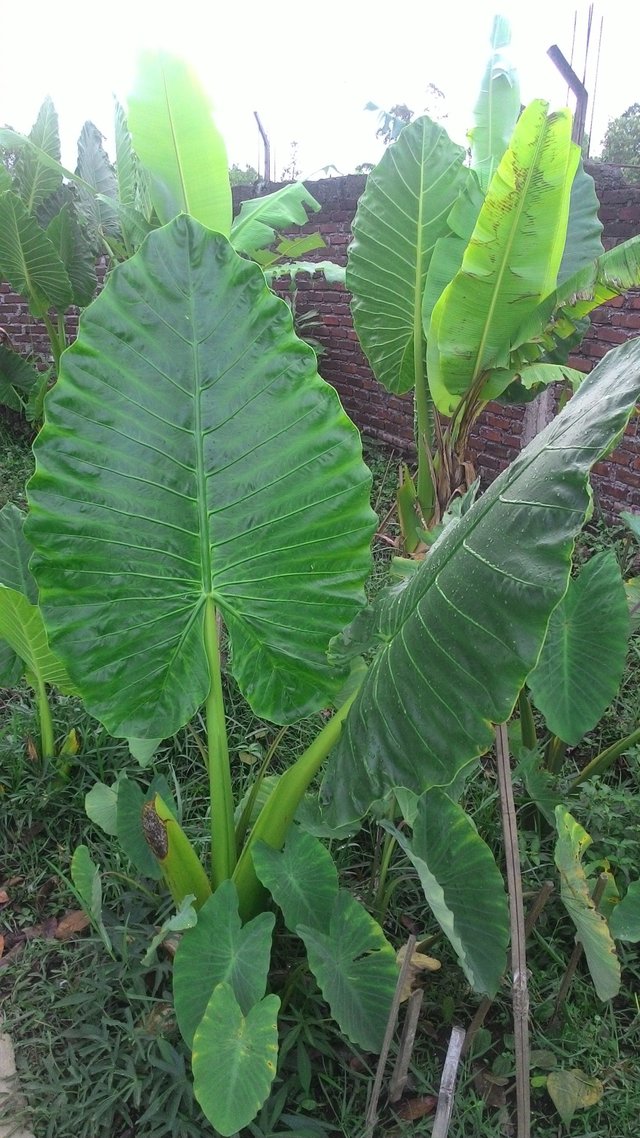
Talas is mainly grown for tubers, which are an important source of carbohydrates. But these tubers contain an itchy sap, which differs sharpness by type, so it must be cooked before it can be consumed. Eating taro can not be excessive, because it contains the sap that causes itching. Too much to eat talas cause
flavors and indigestion.
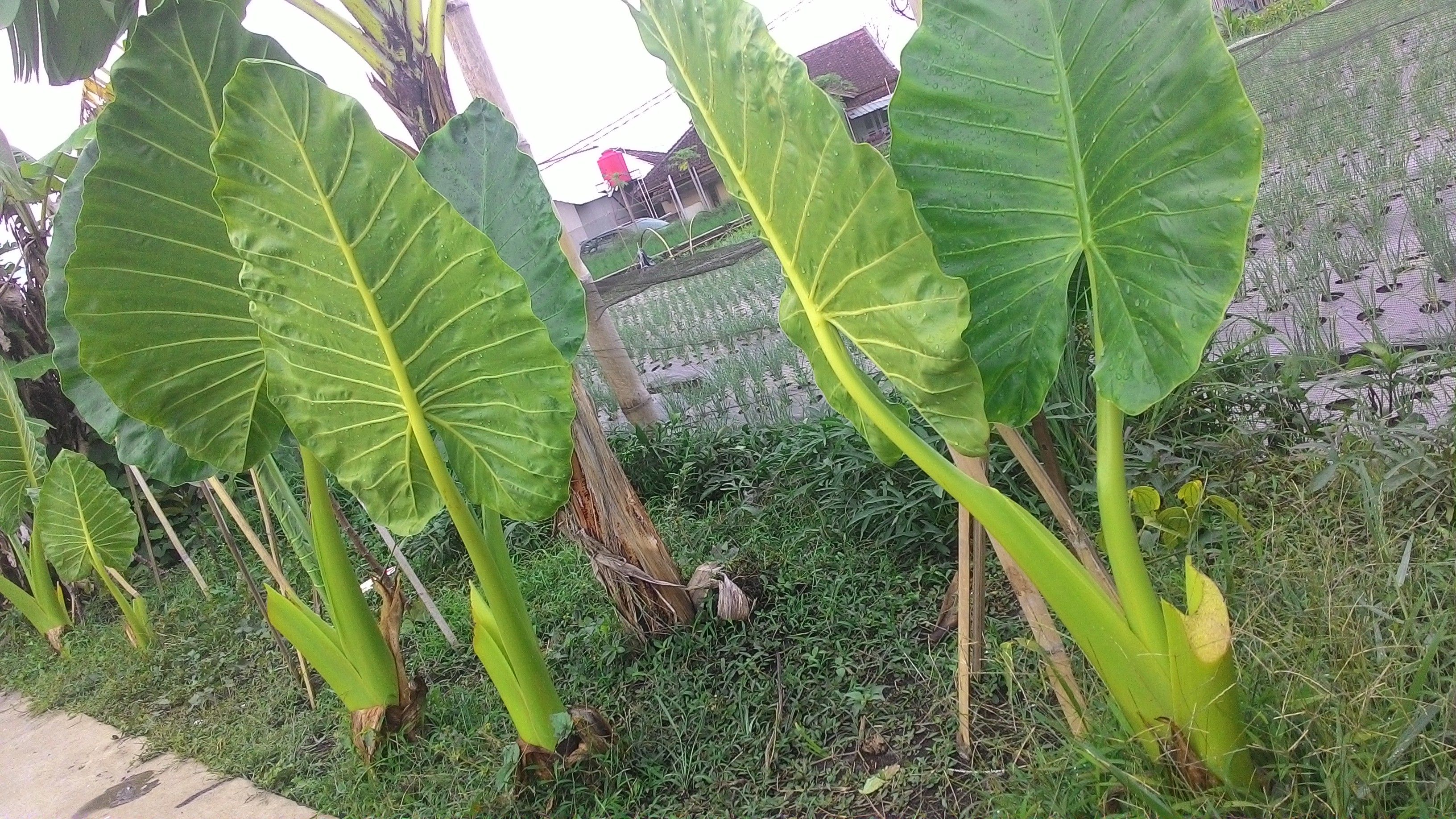
Talas tubers can be processed by steaming, boiling, baking, fried, or processed into flour, porridge, and pastries.'
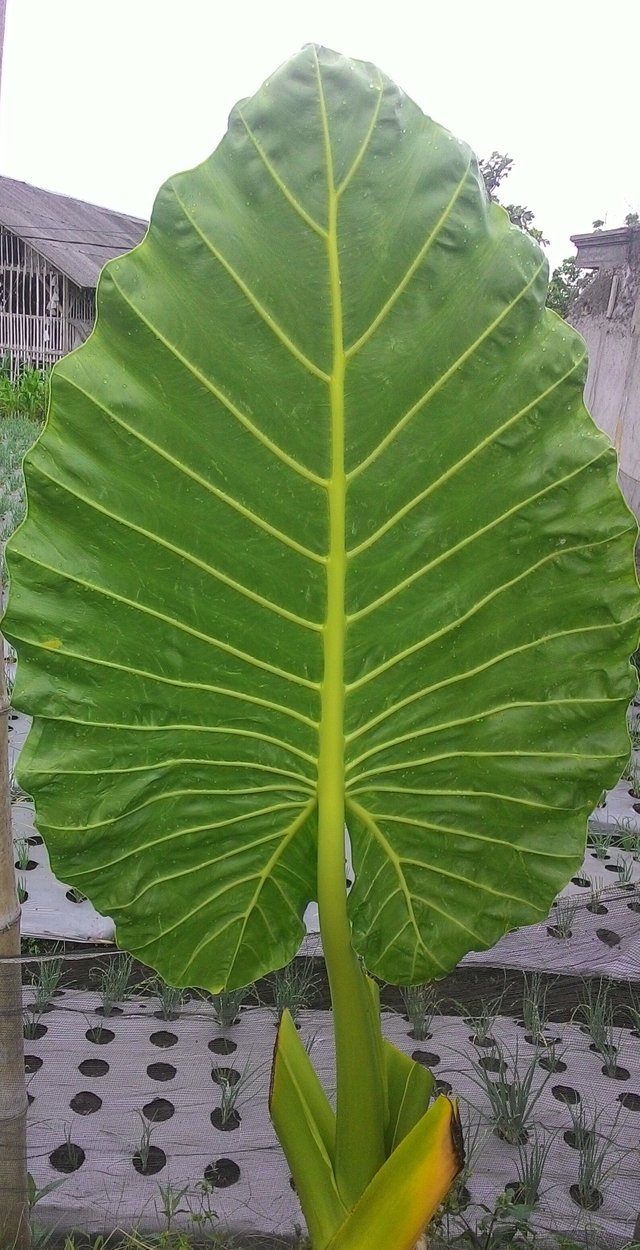
In some areas of Indonesia where rice can not grow, among others in the Mentawai Islands and Papua, taro is eaten as a staple food, by roasting, steamed, or cooked in a bamboo tube. In Hawaii and some parts of Kep. Polynesian, taro tuber steamed and pounded to make pasta which can then be fermented to produce pudding.
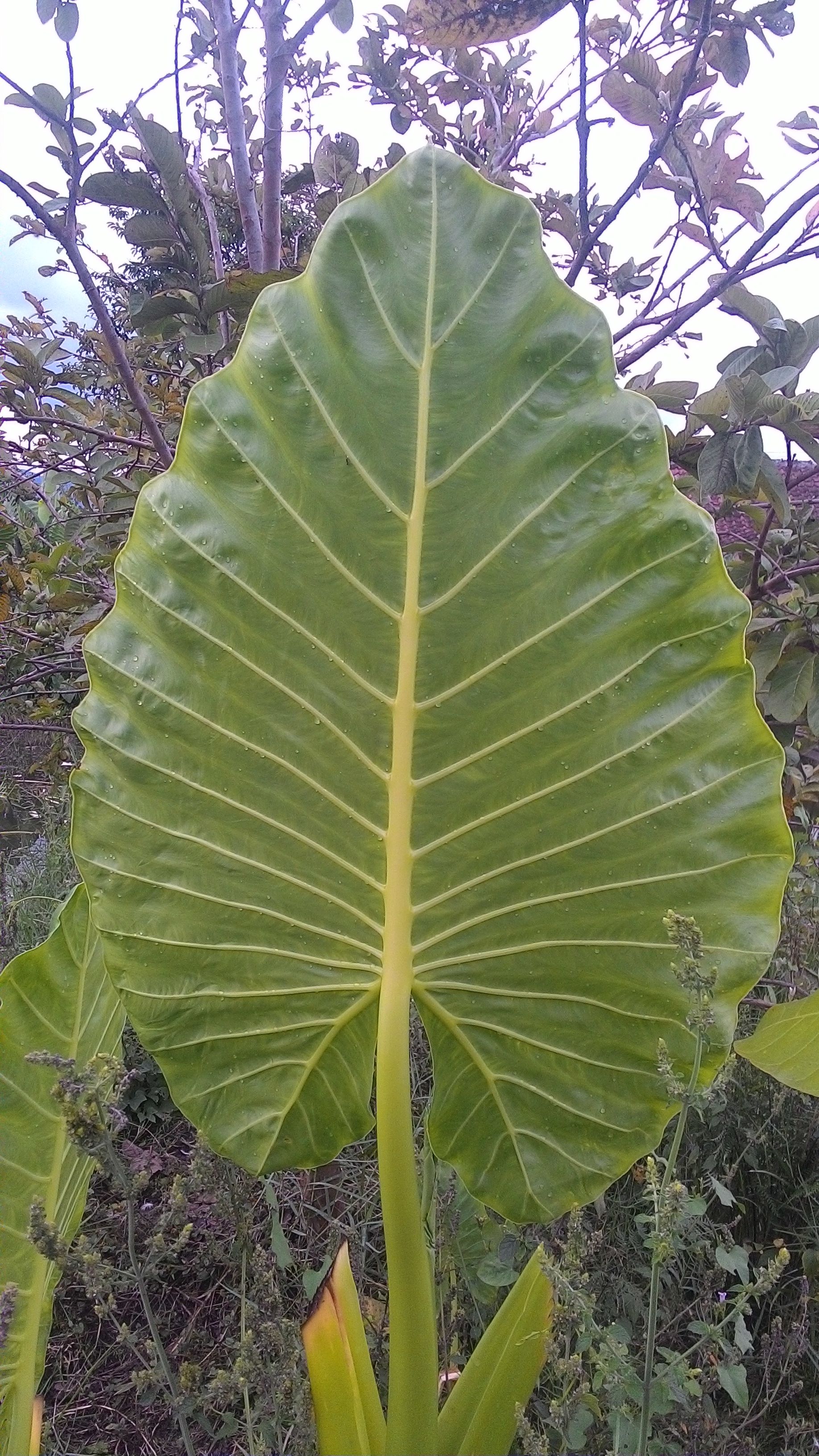
In Java as well as elsewhere in Indonesia, Talas tubers are steamed or fried to be enjoyed as a snack.
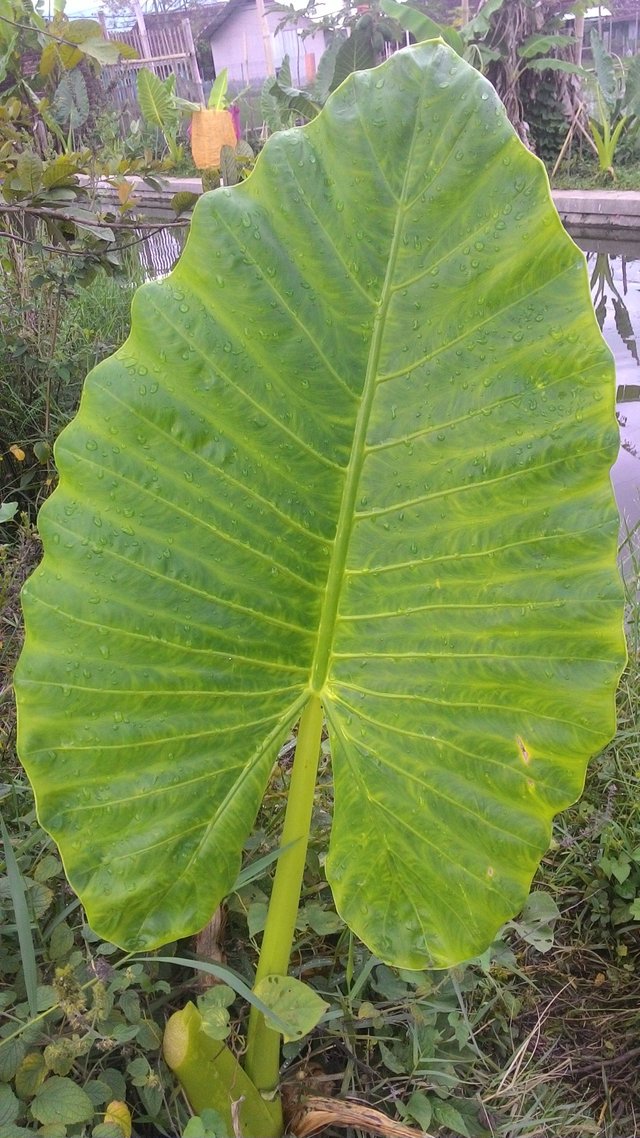
In addition to the tubers, leaves and young Talas leaves can be used as vegetables. Vegetable lompong from West Java is a kind of curry that utilizes the shoots and stalks of young taro leaves , cooked with or without coconut milk. The young leaves are known as the preferred buntil wrappers.
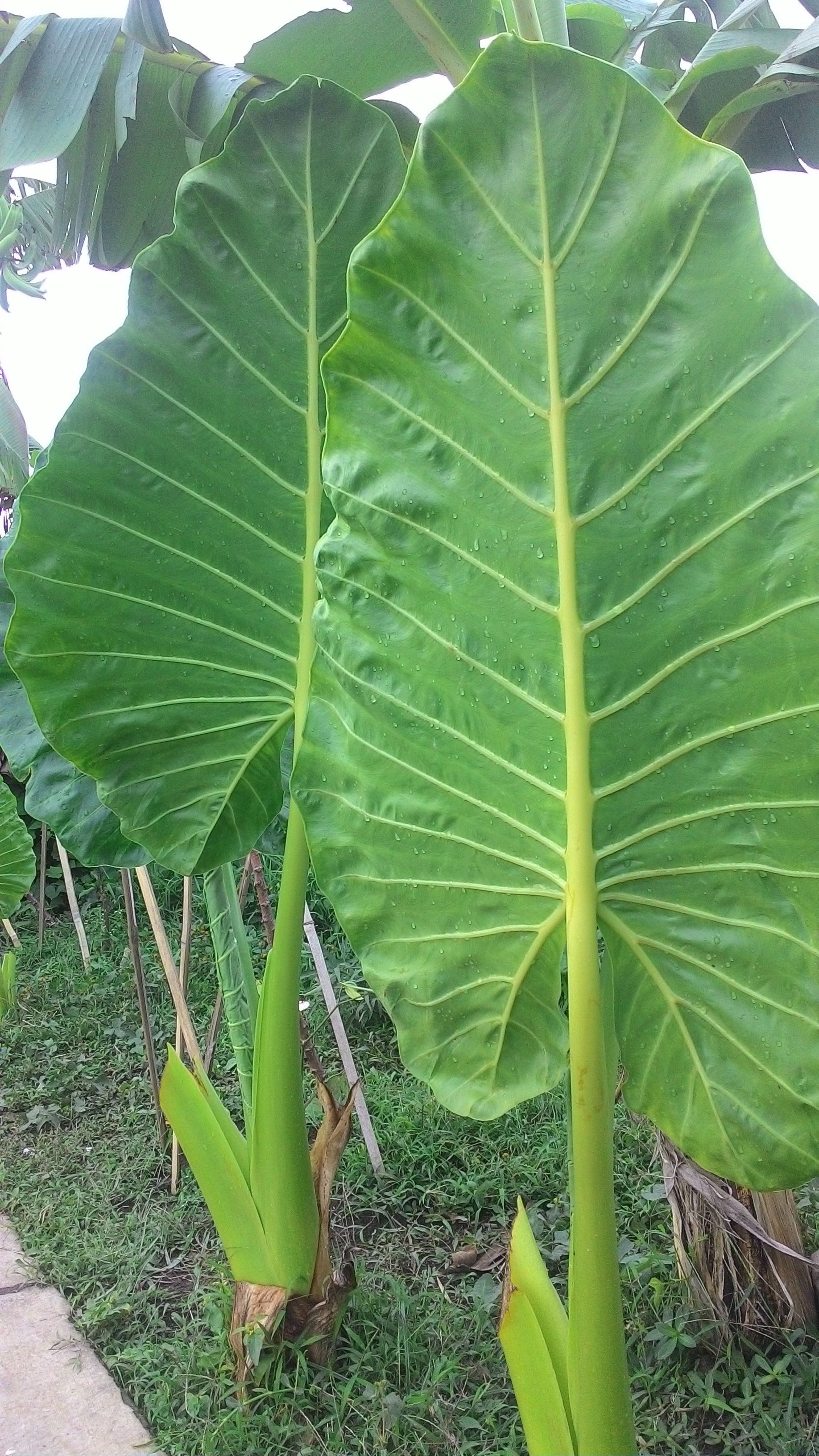
Talas leaves, old or young, are also used as carp feed. Leaves, petioles, and tubers are used as a mixture of animal feed.
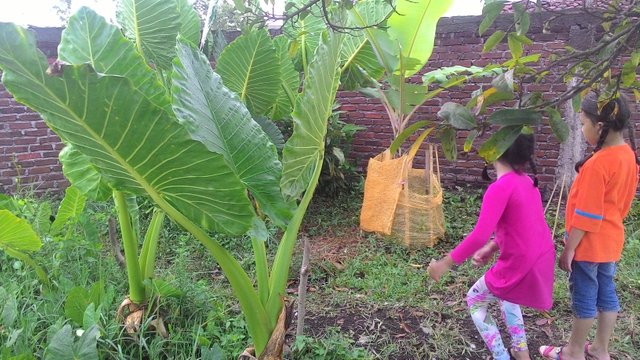
Talas leaves are shaped large. This leaves can be used as a protective head when it rains. The surface of the leaves is overgrown with fine hairs that make it waterproof, ie water will flow directly leaving the leaf surface without wetting it. Because of its width, taro leaves can be used as wrappers, for example for wet fish, in traditional markets.
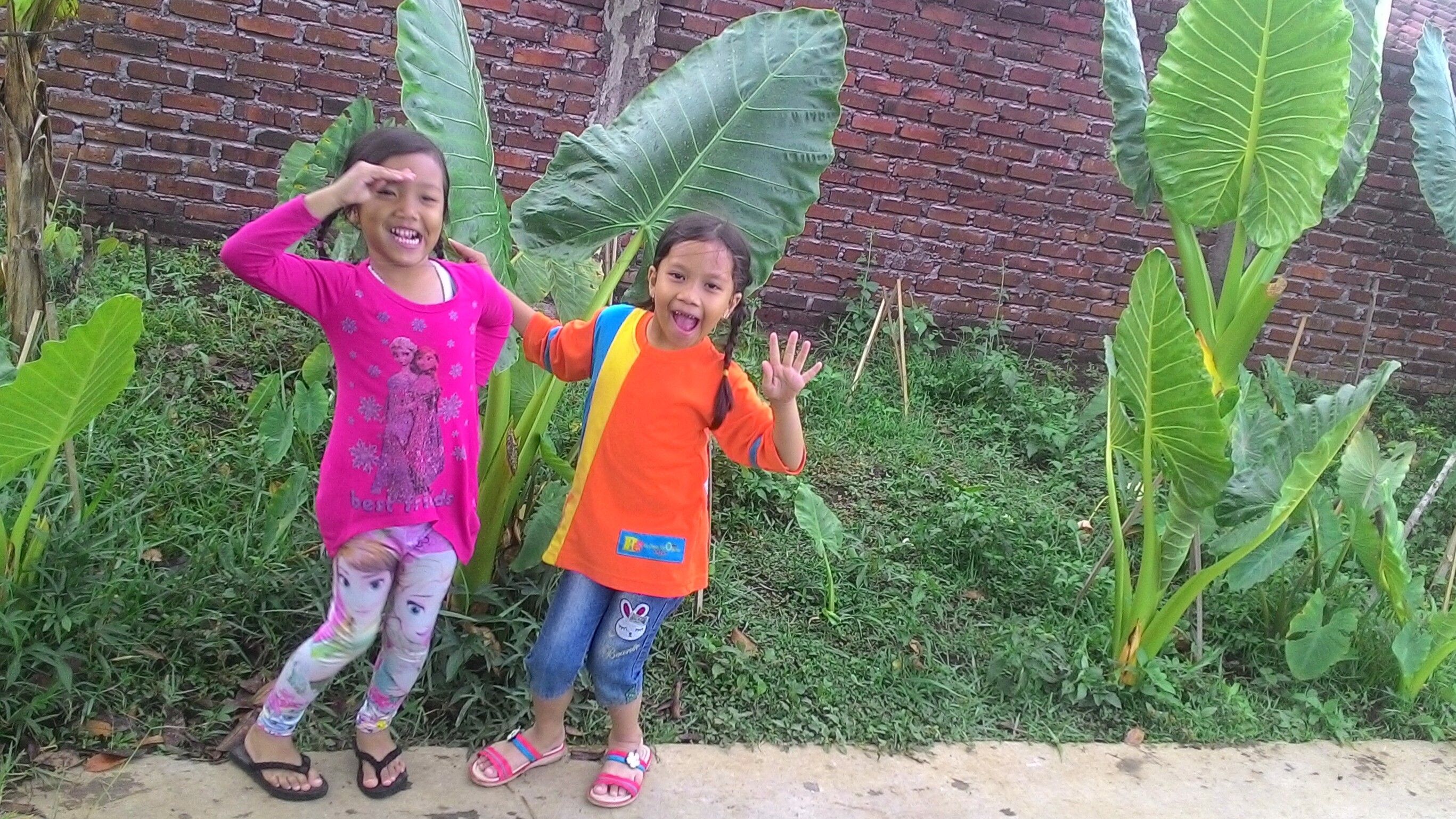
Talas flavor itself is sweet and spicy, and its neutral. Umbinya little toxic, efficacious anti-inflammatory, and reduce swelling. The leaves and stems are astringent. Tubers and flower stalks contain flour, villose, polyphenols, and saponins. The leaves contain polyphenols. For external use, wash the leaves following the stems, then milled until smooth. Apply it to ulcers, ulcers, or parts exposed to hot water.
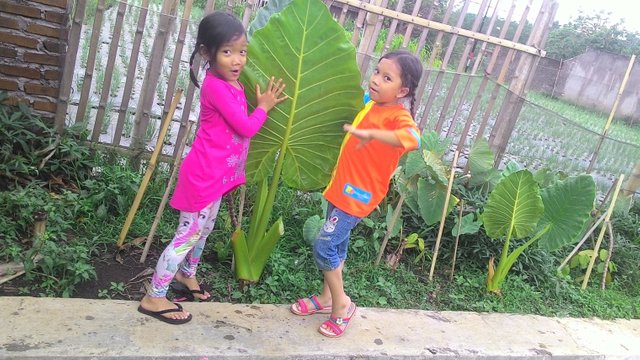
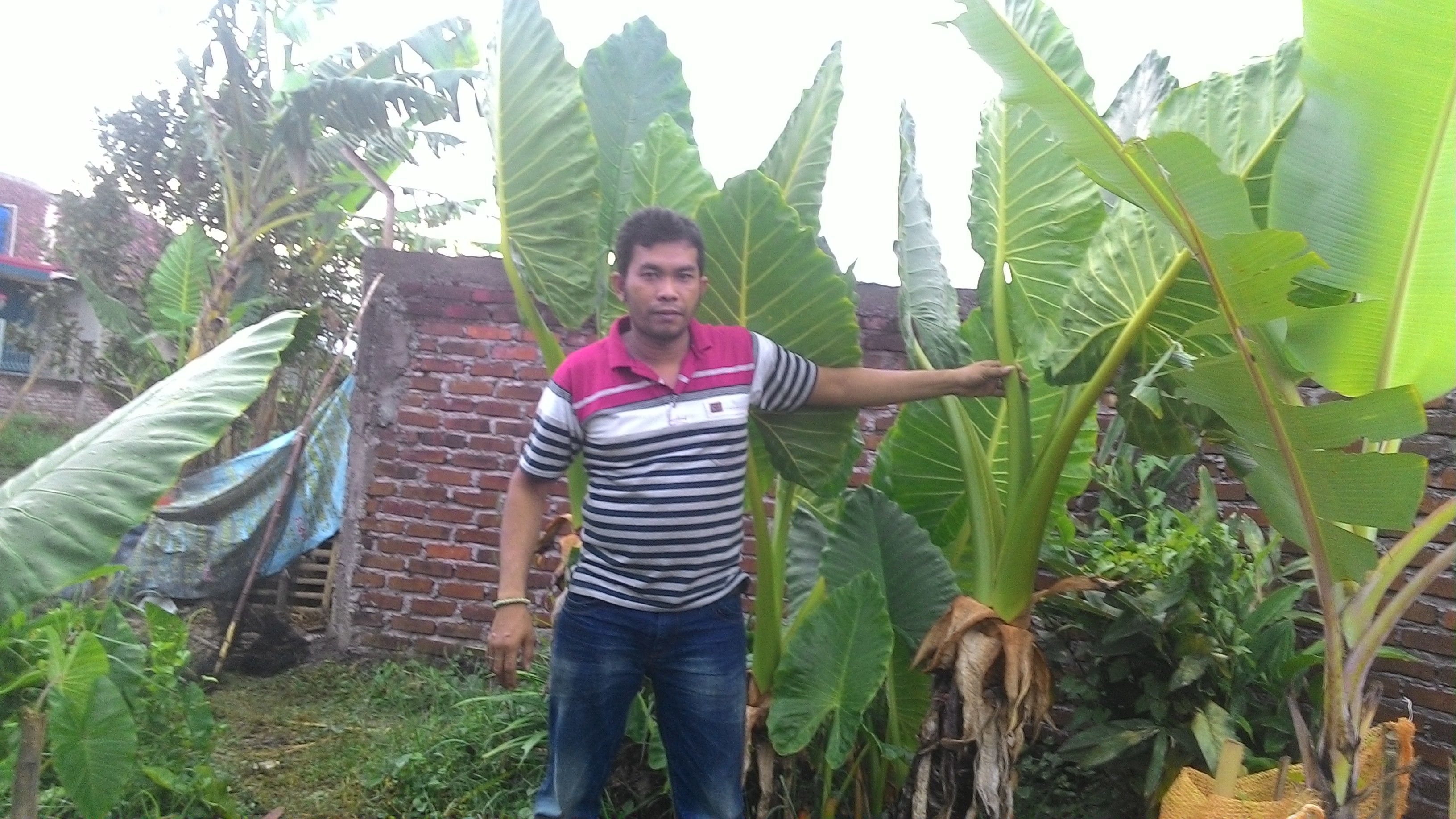
Reference
^ Schott, H. & S. Endlicher. 1832. Meletemata Botanica: 18. Vindobonae :Typis C. Gerold.
^ Linné, C. von & L. Salvius. 1753. Species plantarum :exhibentes plantas rite cognitas, ad genera relatas, cum differentiis specificis, nominibus... Tomus II: 965. Holmiae :Impensis Laurentii Salvii.
^ The Plant List: Colocasia esculenta (L.) Schott
^ a b c d e f Flach, M. & F. Rumawas (Eds.) Plant Resources of South-East Asia (PROSEA) 9 - Plants yielding non-seed carbohydrates: 69-72 (Colocasia esculenta (L.) Schott)
^ a b Heyne, K. 1987. Tumbuhan Berguna Indonesia I: 497-9. Badan Litbang Kehutanan, Departemen Kehutanan. Jakarta. (versi berbahasa Belanda -1913- I: 156, sebagai Colocasia antiquorum Schott)
^ a b Steenis, CGGJ van. 1981. Flora, untuk sekolah di Indonesia. PT Pradnya Paramita, Jakarta. Hal. 143-4
^ a b Dalimartha, Setiawan (2007). Atlas Tumbuhan Obat Indonesia. 4:93 – 95. Jakarta:Puspa Swara. ISBN 979-1133-14-X
^ a b c Soeseno, Slamet (1985). Sayur-Mayur untuk Karang Gizi. hal.10[Jakarta](Jakarta:Penebar Swadaya). :Penebar Swadaya.
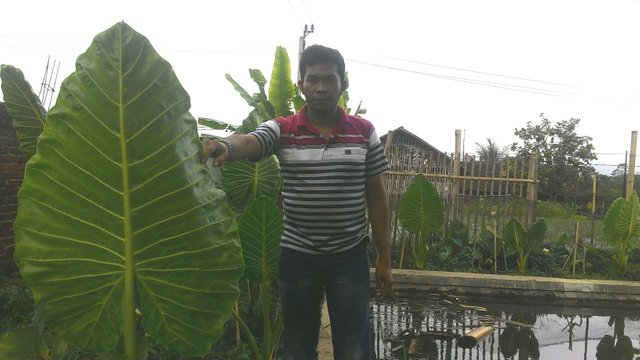
This post has received a 3.15 % upvote from @buildawhale thanks to: @anwarabdullah. Send at least 0.50 SBD to @buildawhale with a post link in the memo field for a portion of the next vote.
To support our curation initiative, please vote on my owner, @themarkymark, as a Steem Witness
Downvoting a post can decrease pending rewards and make it less visible. Common reasons:
Submit
Congratulations! This post has been upvoted from the communal account, @minnowsupport, by anwarabdullah from the Minnow Support Project. It's a witness project run by aggroed, ausbitbank, teamsteem, theprophet0, someguy123, neoxian, followbtcnews/crimsonclad, and netuoso. The goal is to help Steemit grow by supporting Minnows and creating a social network. Please find us in the Peace, Abundance, and Liberty Network (PALnet) Discord Channel. It's a completely public and open space to all members of the Steemit community who voluntarily choose to be there.
Downvoting a post can decrease pending rewards and make it less visible. Common reasons:
Submit
Wah panen tales nih wkwkwk... Mantap bro :D
Downvoting a post can decrease pending rewards and make it less visible. Common reasons:
Submit
Iya lagi panen talas bogor tapi saya tamannya di kebun saya, di Garut. :) @syarrf
Downvoting a post can decrease pending rewards and make it less visible. Common reasons:
Submit